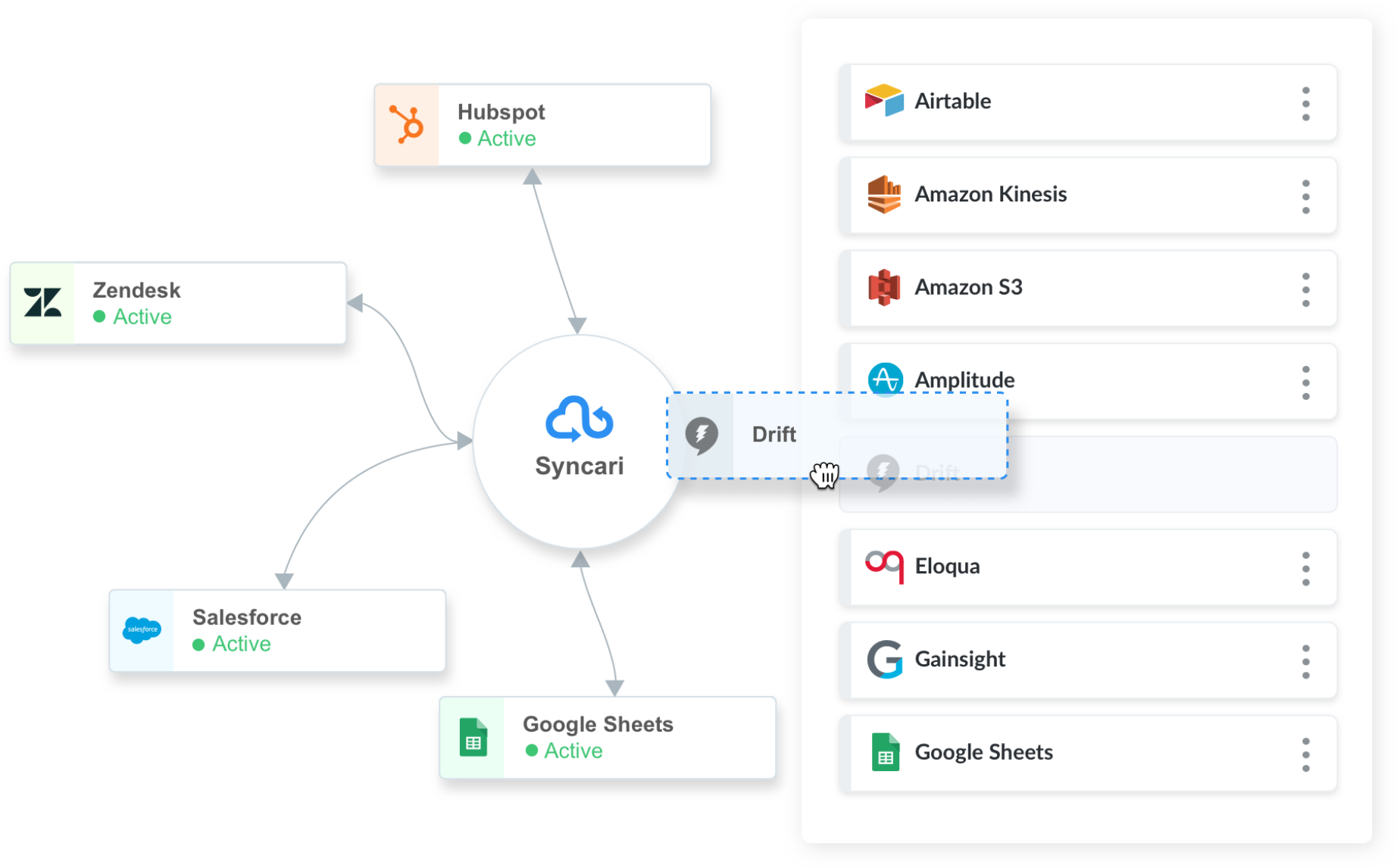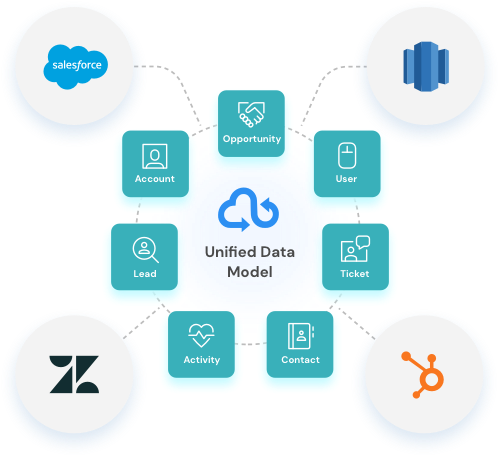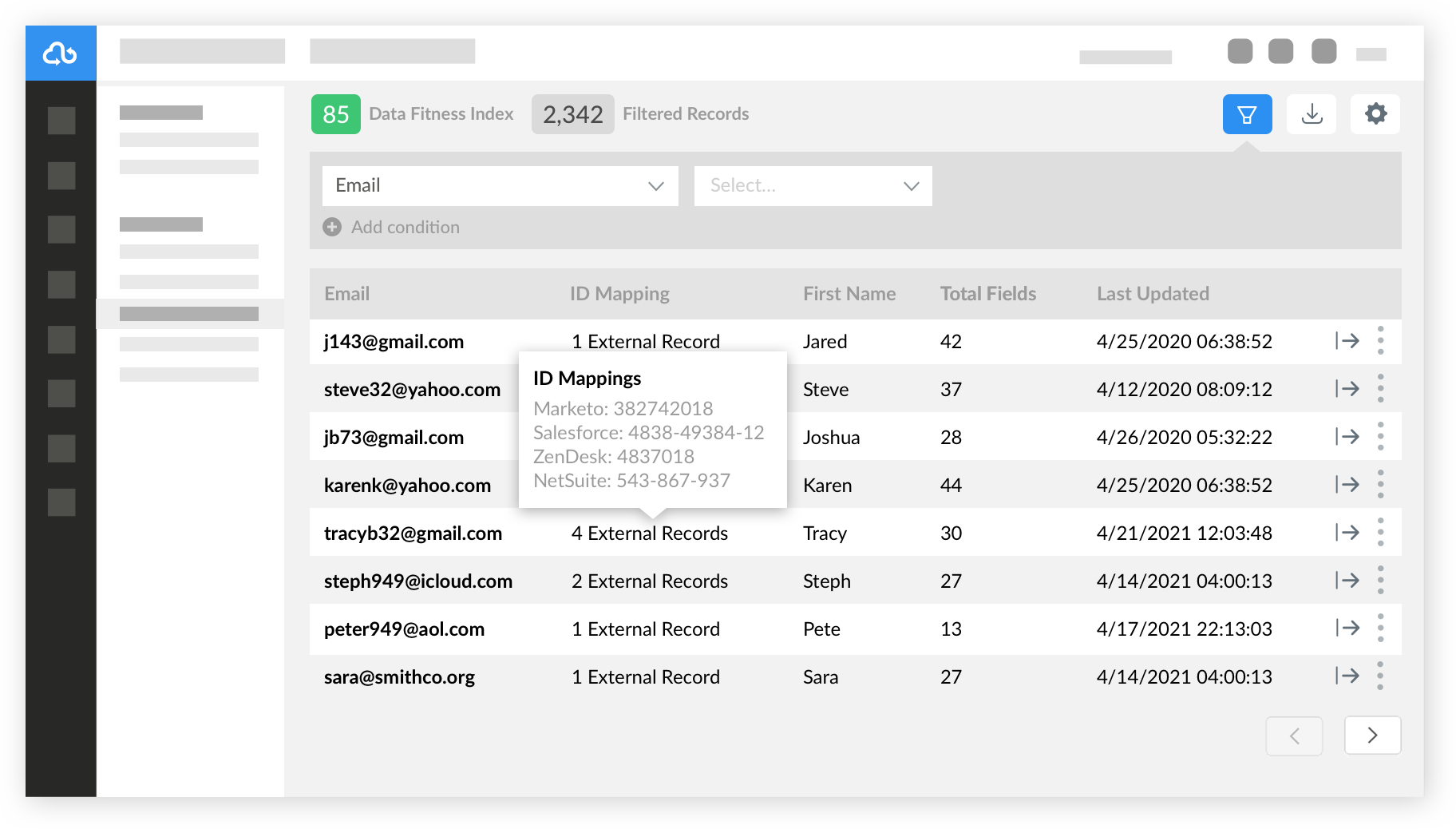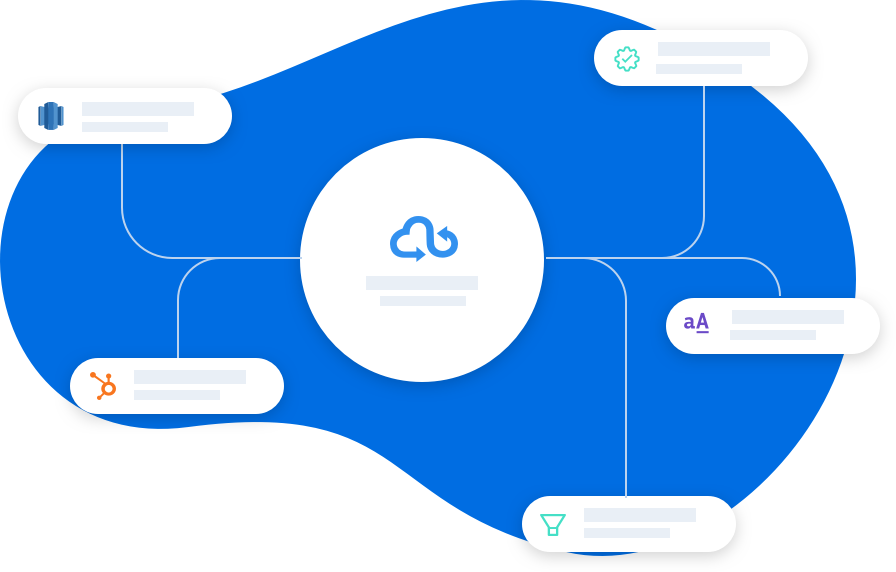A Zapier alternative that brings trusted data to your automated workflows.
Zapier, like many other iPaaS solutions, promises integration and automation with speed and simplicity. Unfortunately, this is a promise they can’t keep. After deploying an initial set of zaps, many Zapier customers find themselves with disjointed, unreliable, code-centric workflows that can’t keep up with their ever-changing data landscape.
Zapier creates data chaos.
- Relies on brittle legacy data patterns and techniques
- Distributes dirty data between and across systems
- Creates syncs with endless loops and duplicate records
- Breaks with every schema change, system outage or API issue
- Requires custom code to meet common requirements
Syncari helps revenue teams take back control of their data.
Syncari combines iPaaS, workflow automation, and data management capabilities into one complete platform, empowering revenue teams to automatically distribute ‘data truth’ throughout the business so every department is working with the same data, without the chaos.
See Syncari in Action| Capability | Syncari | Zapier |
|---|---|---|
| Process Automation | ||
| Simple workflow builder | ||
| Templates, actions & triggers | ||
| Connectivity | ||
| Hundreds of simple connectors | ||
| Self-healing connectivity to top apps | ||
| Codeless configuration | ||
| Data Automation | ||
| Multi-system sync | ||
| Audit and rollback transactions | ||
| Automatic error handling | ||
| Data Quality | ||
| Centralized de-dupe and merge | ||
| Centralized enrichment | ||
| Cross-system Data Fitness Index™ | ||
| Unified data model | ||
| Data Governance | ||
| Data authorities | ||
| Schema management | ||
| Data policies | ||
| Data Visibility | ||
| Automatic, secure data storage | ||
| Filterable 360-degree data views | ||
| Inline data editing | ||




